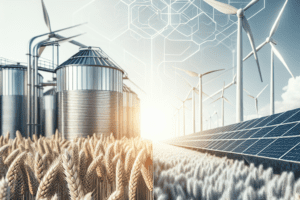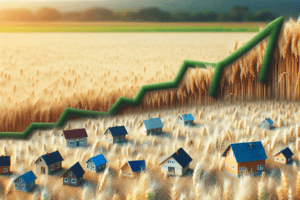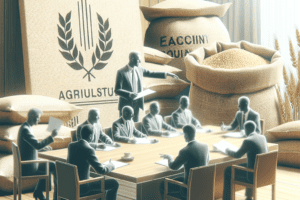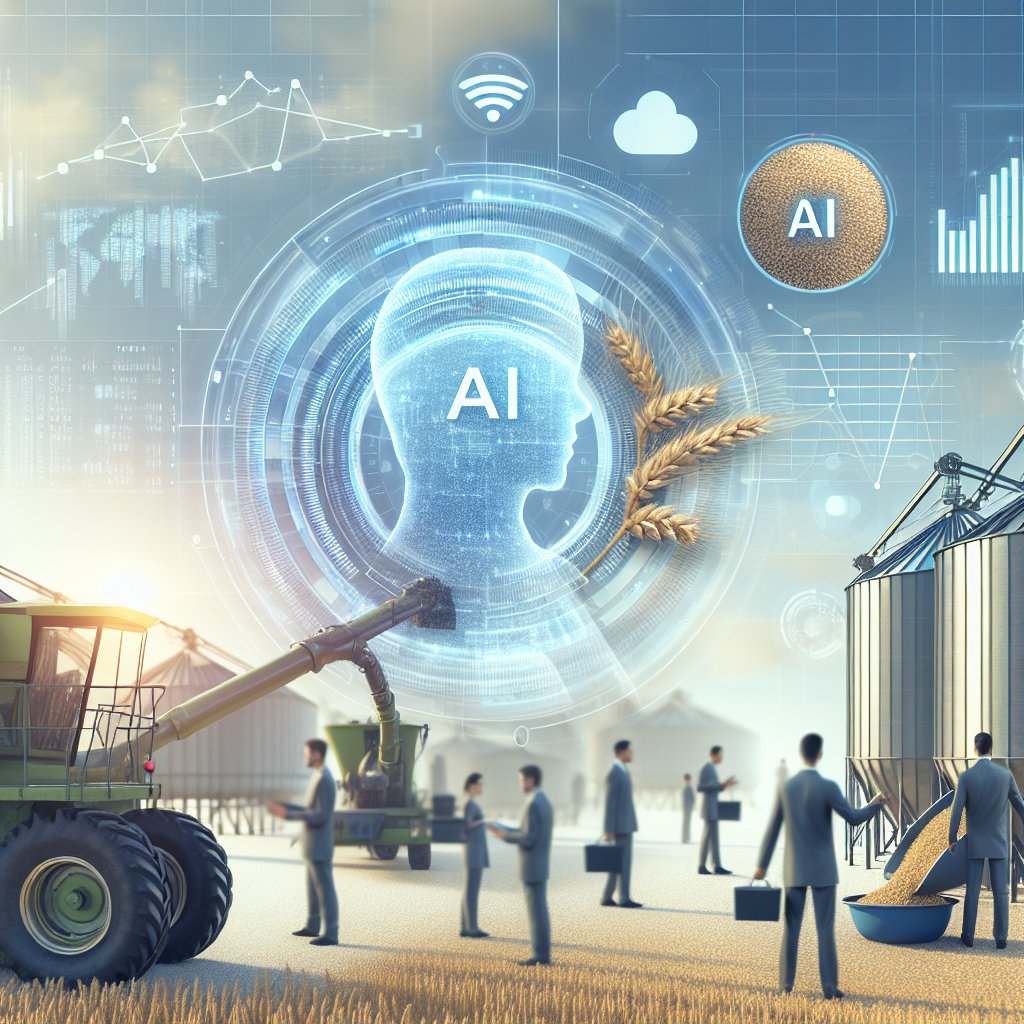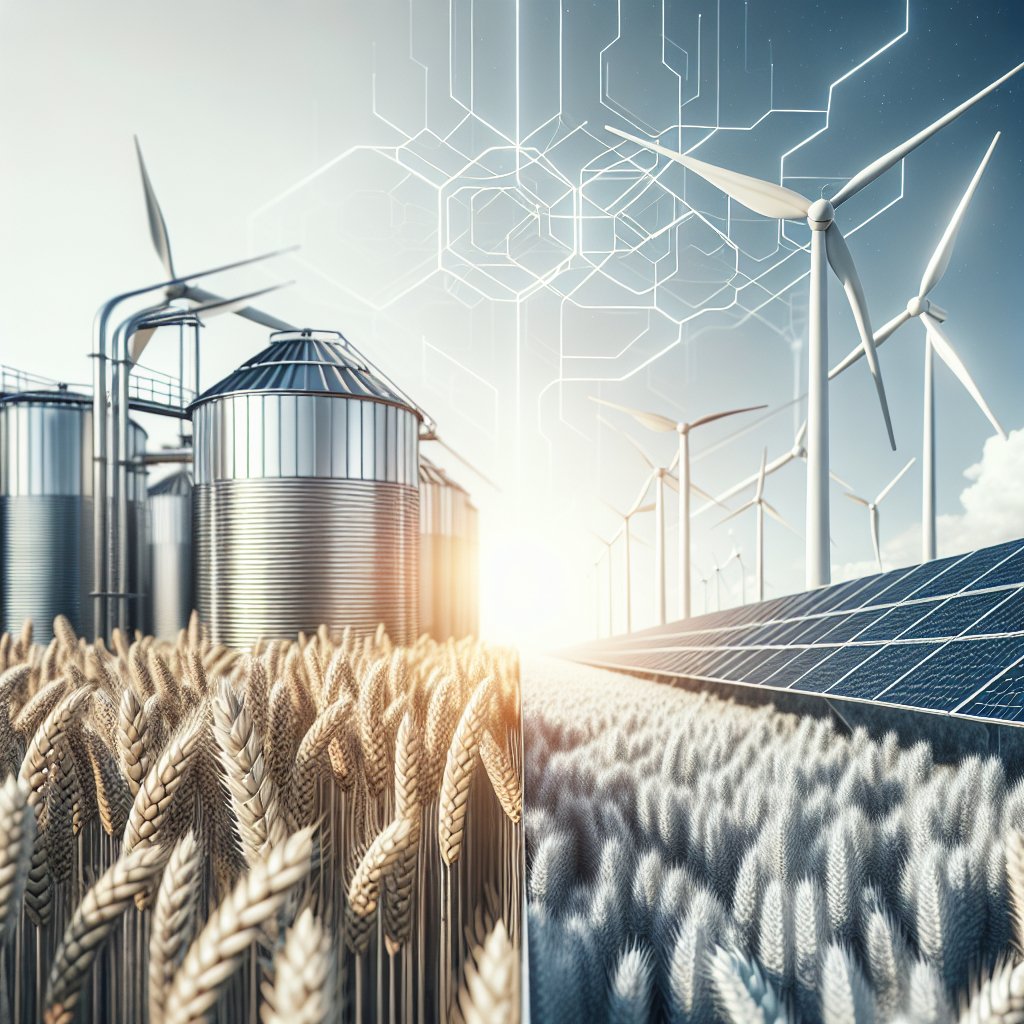The grain market is undergoing a significant transformation driven by innovations in technology, particularly artificial intelligence (AI) and predictive analytics. These advancements are reshaping how stakeholders in the grain industry operate, from farmers to distributors, and are enhancing decision-making processes, optimizing supply chains, and improving overall efficiency. This article explores the impact of AI and predictive analytics on the grain market, highlighting key innovations and their implications for the future of agriculture.
Understanding AI and Predictive Analytics in Agriculture
Artificial intelligence refers to the simulation of human intelligence processes by machines, particularly computer systems. In agriculture, AI encompasses a range of technologies, including machine learning, natural language processing, and robotics, which can analyze vast amounts of data to make informed decisions. Predictive analytics, on the other hand, involves using statistical algorithms and machine learning techniques to identify the likelihood of future outcomes based on historical data.
In the context of the grain market, these technologies are being utilized to enhance various aspects of production, distribution, and market analysis. By leveraging AI and predictive analytics, stakeholders can gain insights into crop yields, market trends, and consumer preferences, ultimately leading to more informed decision-making.
Applications of AI in Grain Production
AI technologies are being integrated into various stages of grain production, from planting to harvesting. Here are some key applications:
- Precision Agriculture: AI-powered tools enable farmers to monitor soil health, moisture levels, and crop conditions in real-time. Drones equipped with sensors can collect data on crop health, allowing farmers to make precise adjustments to irrigation and fertilization.
- Yield Prediction: Machine learning algorithms can analyze historical yield data, weather patterns, and soil conditions to predict future crop yields. This information helps farmers make better planting decisions and manage resources more effectively.
- Pest and Disease Management: AI systems can identify early signs of pest infestations or diseases by analyzing images captured by drones or smartphones. This allows for timely interventions, reducing crop losses and minimizing the use of pesticides.
Enhancing Supply Chain Efficiency
The grain supply chain is complex, involving multiple stakeholders, including farmers, processors, distributors, and retailers. AI and predictive analytics are streamlining this process in several ways:
- Demand Forecasting: Predictive analytics can analyze market trends, consumer behavior, and historical sales data to forecast demand for various grain products. This helps producers and distributors optimize their inventory levels and reduce waste.
- Logistics Optimization: AI algorithms can optimize transportation routes and schedules, ensuring timely delivery of grain products to markets. This reduces transportation costs and improves overall supply chain efficiency.
- Market Analysis: AI tools can analyze vast amounts of market data, including pricing trends and competitor activities, providing stakeholders with insights that inform pricing strategies and market positioning.
The Future of the Grain Market with AI and Predictive Analytics
As the grain market continues to evolve, the integration of AI and predictive analytics is expected to play a crucial role in shaping its future. Here are some potential developments:
Increased Adoption of Smart Farming Technologies
The trend towards smart farming is likely to accelerate as more farmers recognize the benefits of AI and predictive analytics. With the decreasing cost of technology and increasing access to data, even small-scale farmers will be able to leverage these tools to enhance their productivity and profitability.
Data-Driven Decision Making
As AI and predictive analytics become more prevalent, decision-making in the grain market will increasingly rely on data-driven insights. Stakeholders will be able to make more informed choices regarding crop selection, resource allocation, and market strategies, ultimately leading to improved outcomes.
Sustainability and Environmental Impact
AI technologies can also contribute to more sustainable farming practices. By optimizing resource use and reducing waste, farmers can minimize their environmental impact. Predictive analytics can help identify the most sustainable practices for specific regions, promoting environmentally friendly farming methods.
Challenges and Considerations
Despite the numerous benefits of AI and predictive analytics in the grain market, several challenges must be addressed:
- Data Privacy and Security: As more data is collected and analyzed, concerns about data privacy and security will become increasingly important. Stakeholders must ensure that sensitive information is protected.
- Access to Technology: While technology is becoming more accessible, there are still disparities in access, particularly in developing regions. Efforts must be made to ensure that all farmers can benefit from these innovations.
- Training and Education: The successful implementation of AI and predictive analytics requires a skilled workforce. Training programs will be essential to equip farmers and industry professionals with the necessary skills to utilize these technologies effectively.
Conclusion
The integration of AI and predictive analytics into the grain market represents a significant leap forward in agricultural practices. By enhancing productivity, optimizing supply chains, and promoting sustainability, these technologies are poised to transform the industry. As stakeholders embrace these innovations, the future of the grain market looks promising, with the potential for increased efficiency, profitability, and environmental stewardship.


